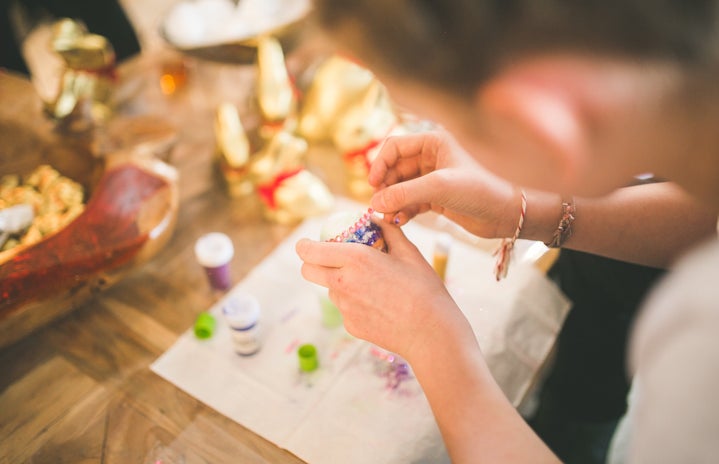I have been following fashion content on YouTube and Instagram for years now and it has been interesting to observe a shift in how fashion creators are turning to more DIY/sewing content. With the rise of influencer culture, fashion content was dominated by consumerism and brand affiliations, however, I find that more creators are now encouraging their followers to be more creative and autonomous with their style.
Personally, I started my sewing journey earlier this year, late March, to keep busy during lockdown. It is important to note that it was also at this time that I started using TikTok. Prior to sharing my first sewing project on the platform, I did a bit of hashtag research and saw that at the time (late March) “#sewing” had about 80 million videos tagged with that hashtag. Currently (early October), there are over 2.3 billion videos tagged with the same hashtag. Now more than ever, people are taking pride in projects they have completed with their own hands.
Now thrift flipping and DIY is nothing new. In fact, I came across a video of a girl explaining that when she was in middle school, she would get dragged for solely wearing second-hand clothes that were thrift flipped. From a middle schooler point of view, I can understand where the dragging may stem from, as things like trends and/or conformity really dictated how we navigated our own personal styles at those young ages. The point of the video is not to gatekeep the art of DIY or thrift flipping, but in my opinion, it is a beautiful indication of how we have progressed as a society. I also think that considering the fact that we’re in times where financial burdens are a real thing, naturally people are going to look to cheaper alternatives when it comes to shopping for clothing.
I came across another TikTok video discussing a conspiracy theory that the directions for vintage sewing patterns are much easier to follow compared to modern patterns. Making sewing patterns more complex aims to discourage people from making their own clothing, and therefore becoming more dependent on manufacturers and fast-fashion in particular. Now do what you want with that information, but I will point this out: it is interesting that vintage patterns are easier to follow given that vintage designs tend to be more complex. I think it is no coincidence that now, most people do not know how to sew, whereas back in the day almost everyone had these skills. This is also why I find it funny when people comment on my TikToks that I have a lot of talent regarding my sewing skills, when really all I am doing is following a set of instructions. We would never applaud someone for simply cooking a meal by following a recipe. In the modern age, the skill of garment-making is viewed as a niche skillset and interest.
Now the big question is, Why? Why are more and more people taking the time to master the skill of sewing. I think people are looking for hobbies that do not involve screens, but also dismissing the notion that particular crafts are associated with traditional or only for “old ladies”. These skills include sewing, knitting, crocheting, pottery and gardening. I think this also relates to the rise of the cottagecore lifestyle, where individuals adopt a lifestyle that celebrates skills and hobbies usually viewed as “traditional”. More specifically, the rise of sewing goes hand in hand with the rise of thrifting and slow fashion. Usually thrift finds tend to be either oversized, or individuals will try to flip the pieces into more modern styles/silhouettes. These projects are great to start off with, because it does not require the complex art that is patternmaking and garment construction. With a thrift flip you are able to familiarise yourself with either hand-sewing or your sewing machine. I think the big jump in the sewing interest also occurred during the quarantine. I mean, if you have all this free time and a sewing machine at hand, why not learn yourself. There are also tonnes of free resources that do not require people to attend fashion school or sewing courses – not to dismiss the value of fashion school.

Lastly, as someone who is part of the sewing community on TikTok it has only made the journey more enjoyable – everyone is constantly encouraging one another and sharing resources to fuel this common interest.
It is great to see people investing time into these art forms that were previously neglected, or just going out of their comfort zone and exploring a creative side of themselves that they never knew they had. As someone who has been consistently sewing for the past six months, I have immense appreciation for garment workers now that I know how much time goes into making a single garment. I am also more appreciative of the small details such as a buttonhole or a collar, because they are not as simple as they may seem. One of my favourite lessons from my sewing journey is to simply trust the process, even if in the middle it may all seem a mess, trust that it will all come together in the end.


